Are you tired of solid green plants so you are looking to add some colorful, variegated leaves with bright colors to your indoor garden or houseplant collection?
Don’t worry as there are many houseplants with green and white foliage, providing a diverse range of options!
Explore the stunning world of these gorgeous plants and discover their diverse shapes and sizes.
Whether you’re a green thumb or a newbie, some will be a breeze while others will put your skills to the test!
Transform your home into a peaceful oasis with the serene beauty of green and white leafy plants with beautiful leaves!
- Related article: Complete List of Houseplants
I take a look at some of my favorite green and white plants, and offer up some of my top plant care tips and information that will prove helpful in helping them thrive!
1. White Wave (Philodendron ‘Birkin’)
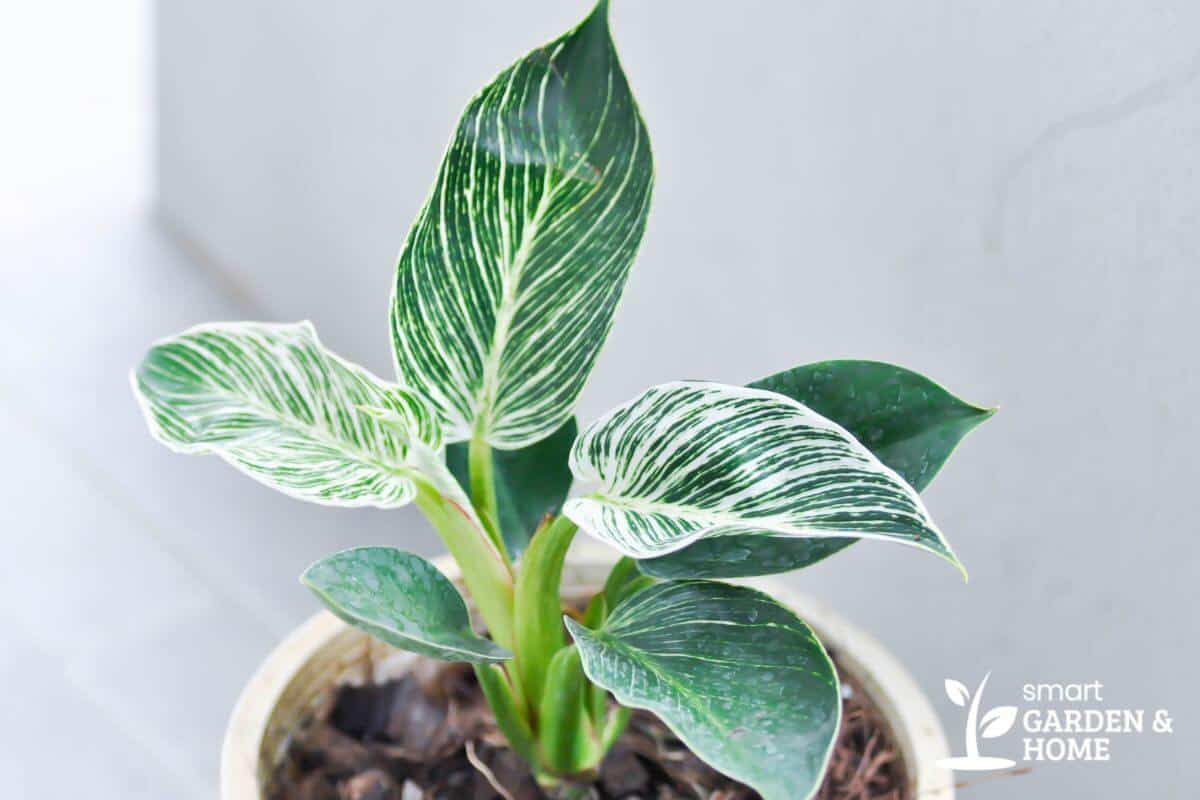
The Philodendron Birkin is an indoor houseplant with striking green and white patterns.
This plant is also very easy to grow and its leaves will tell you when it’s not happy. Its preference for indirect light conditions and warm temperatures make it the perfect plant to grow indoors.
Philodendron Birkin is a thirsty plant and needs to be watered regularly. To determine when to water a plant, observe the top layer of soil around it. If the soil appears dry, it is time to provide the plant hydration.
Learn more about growing Philodendron Birkin plants.
2. Spider Plant (Chlorophytum Comosum)
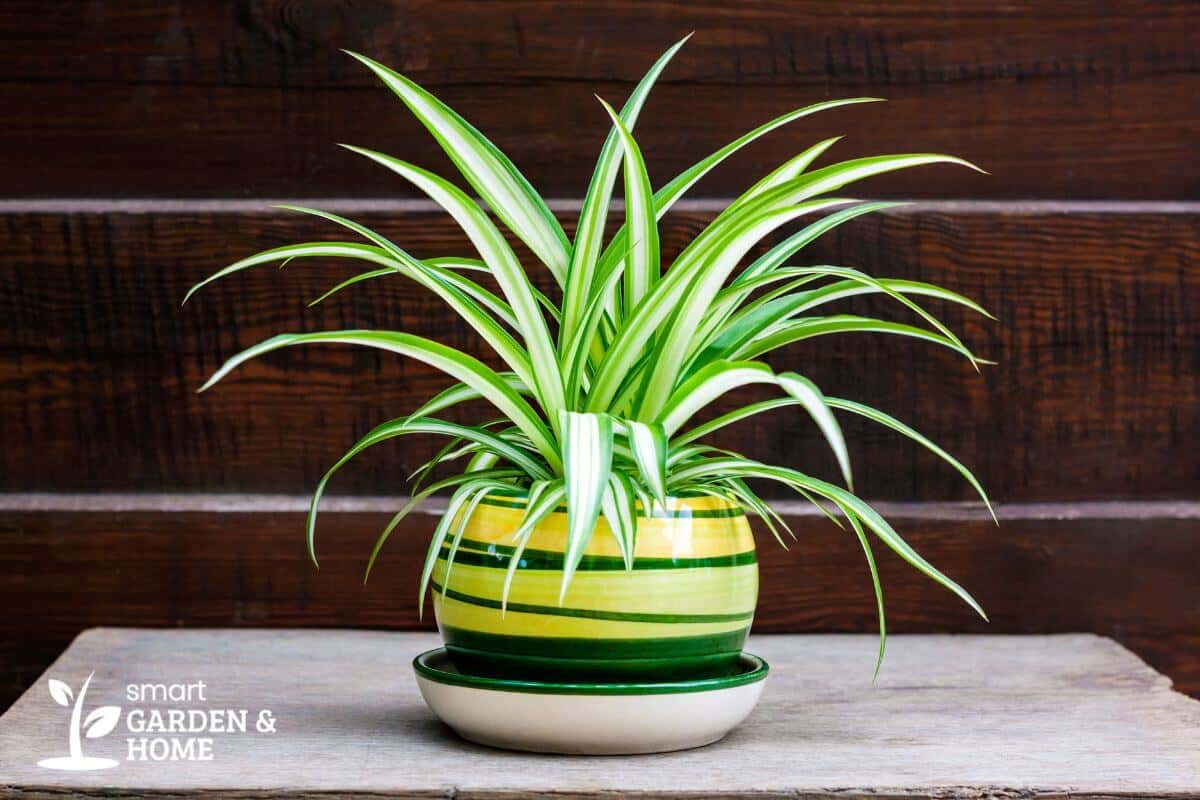
The Spider Plant is widely recognized as a low-maintenance and versatile houseplant. I love spider plants and have them all over my home.
Spider Plants are low-maintenance as they don’t typically have many associated problems.
The Spider Plant gets its name from its long, green, and white-colored leaves that dangle off the main plant.
This plant can withstand neglect, but they prefer to grow in cooler temperatures indoors and their soil needs to dry out before it’s rehydrated.
It’s particularly important not to overwater these plants as their roots are susceptible to root rot.
The Spider Plant needs to be protected from direct sunlight and prefers to grow in indirect sunlight. With plenty of bright, indirect light conditions, this plant blossoms in spring.
3. Aluminum Plant (Pilea Cadierei)
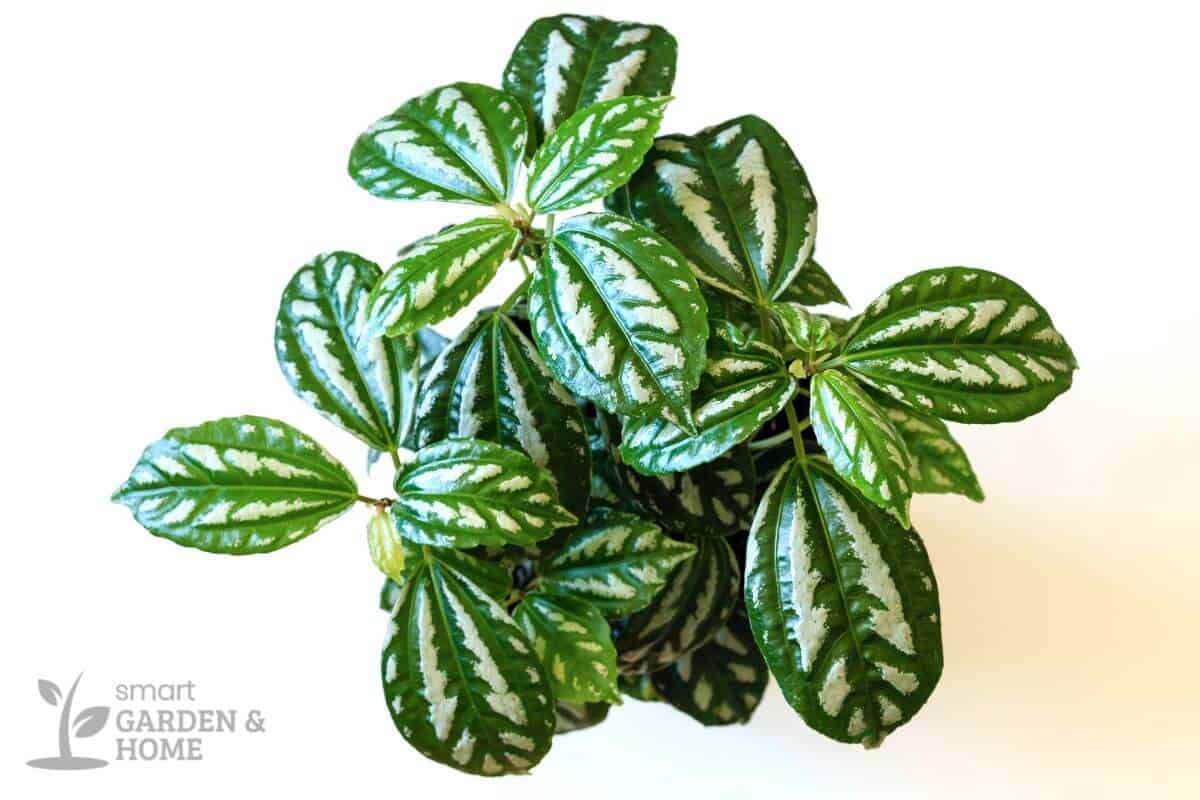
The Aluminum Plant doesn’t require much attention, making it an ideal plant for beginners to grow.
This plant has some interesting green leaves with white streaks along its foliage.
Originally from the forests of China and Vietnam, this house plant is a creeper and tends to spread itself out rather than to grow taller.
This attractive houseplant prefers to grow in bright, indirect light and needs to be watered regularly.
Its rooting system is rather strong and has been known to break through Clay Pot plants.
4. English Ivy (Hedera Helix)
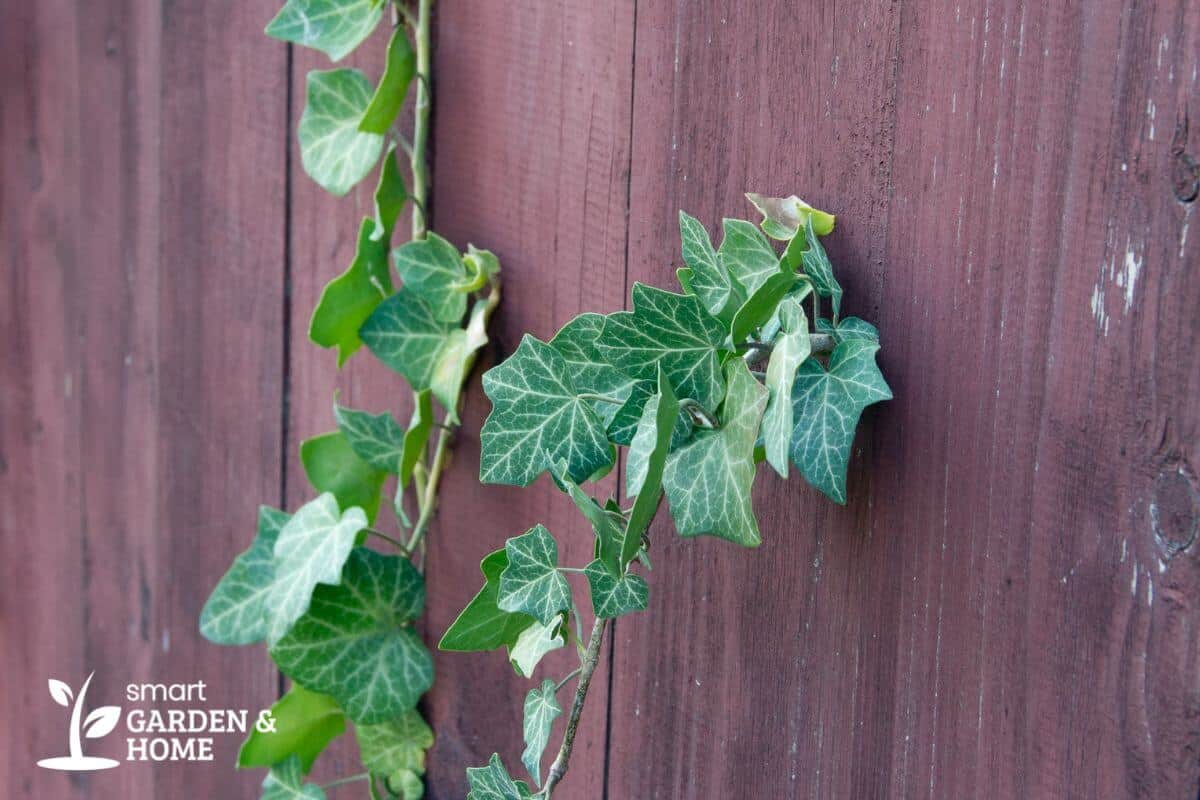
English Ivy, or otherwise known as Common Ivy, is an outdoor plant, but it has taken well to growing in hanging features indoors, provided there is sufficient sunlight.
The leaves of the English Ivy are luscious green with variegated white foliage.
In order to keep this plant’s lush leaves green, it needs to be exposed to bright, ambient light conditions, and grown in moderate environments.
It prefers to grow in humid conditions and needs to be frequently misted indoors or have a nearby humidifier. The English Ivy has air purifying abilities and will clean the air from harmful toxins.
5. Marble Queen Pothos (Epipremnum Pinnatum)
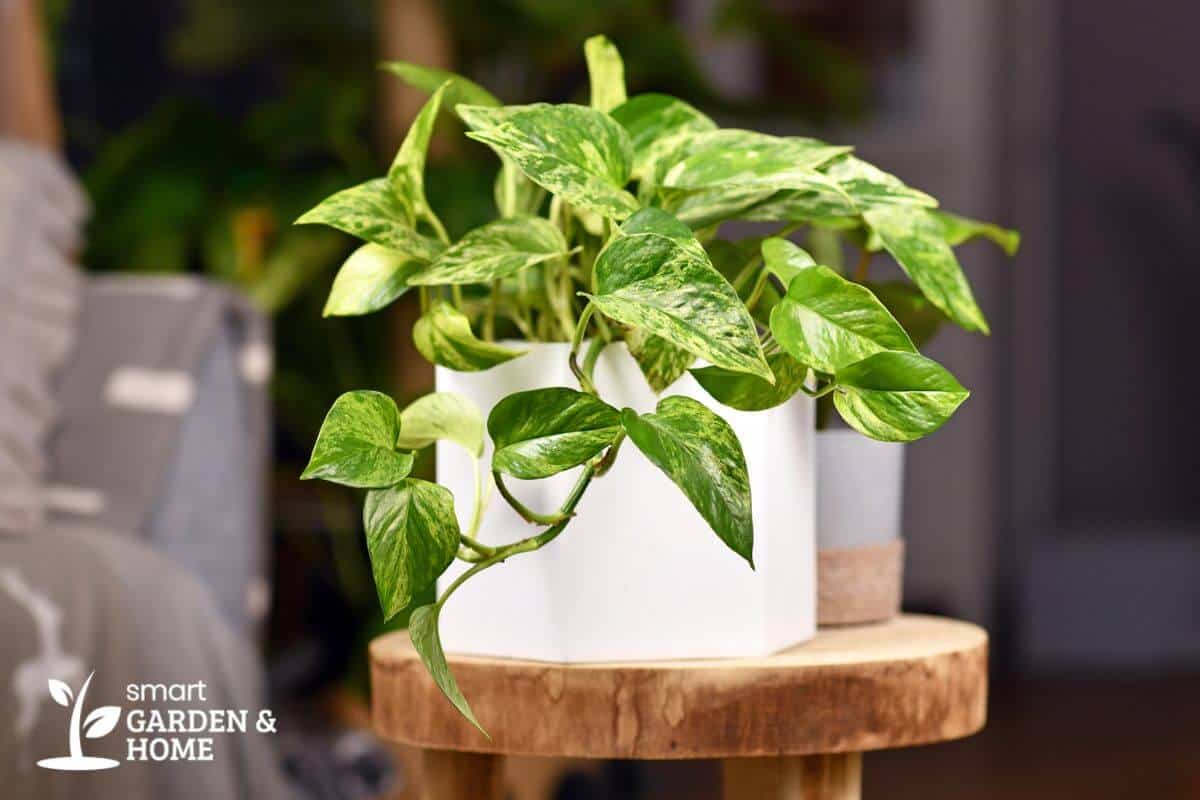
The Pothos plant is an excellent houseplant with several different Pothos varieties, each has their own unique leaf variegation.
The Marble Queen Pothos plant is one to look out for—you can’t miss the white, marble-like foliage on its leaves.
The Marble Queen Pothos is similar to Pothos varieties and can adapt to many conditions, which is probably why it’s one of the most common species of house plants.
This plant also grows extremely fast and is always looking to attach itself to new structures. The plant prefers to grow in ambient light conditions or partially shaded areas of your home.
Avoid exposing this plant to direct sunlight as the sun’s rays will easily scorch this plant’s luscious foliage.
Learn more about growing the Marble Queen Pothos plant.
6. Nerve Plant (Fittonia Albivenis)
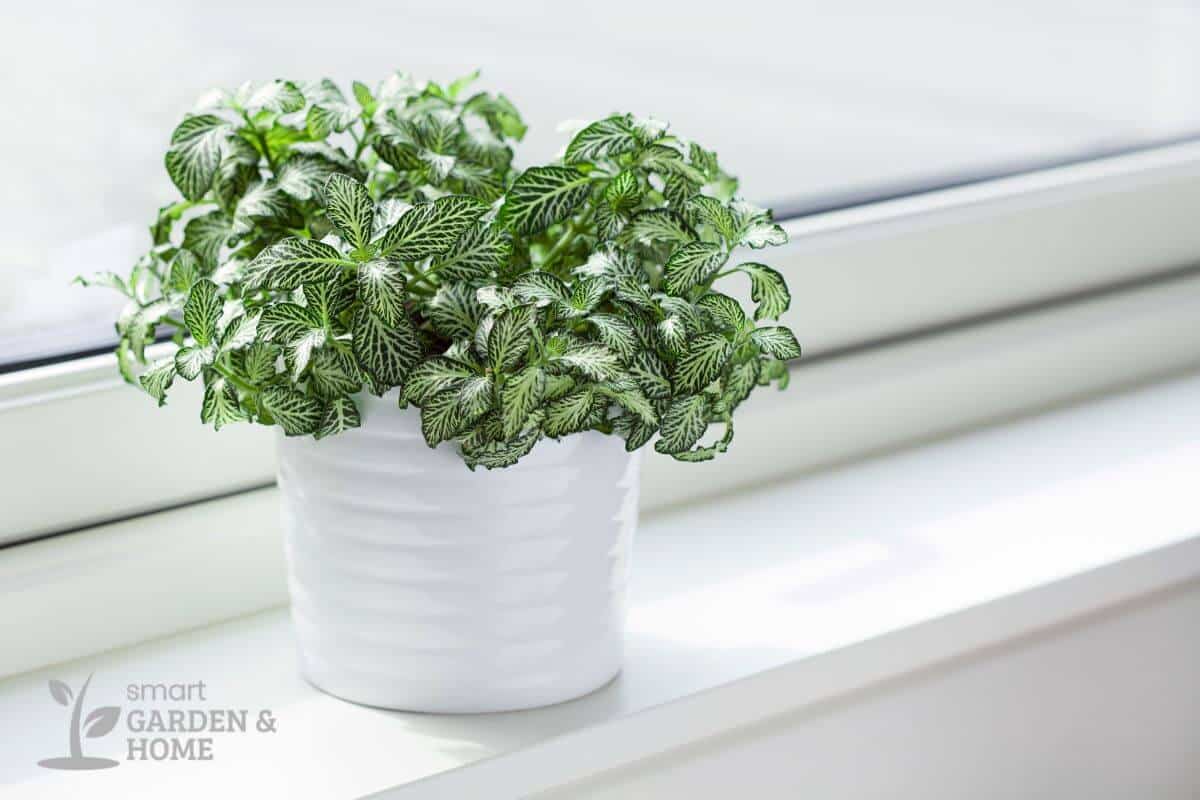
The Nerve Plant is known for its stunning, delicate leaves, plus there are multiple colors and varieties of this plant.
The most commonly occurring species has green and white-veined foliage. For beginners, this plant is not the easiest of options to grow as a houseplant.
Nerve Plants have specific care requirements that need to be strictly followed as they are extremely fussy when it comes to providing the correct levels of light when they need to be watered, and the levels of humidity that they need.
The roots of the Nerve Plant can easily dry out, so frequent watering and regular misting of the plant is required.
As its leaves are delicate, it’s best to keep them out of direct sunlight and place the plant in an area that is not exposed to cold breezes.
7. Satin Pothos (Epipremnum Pictus ‘Argyraeus’)
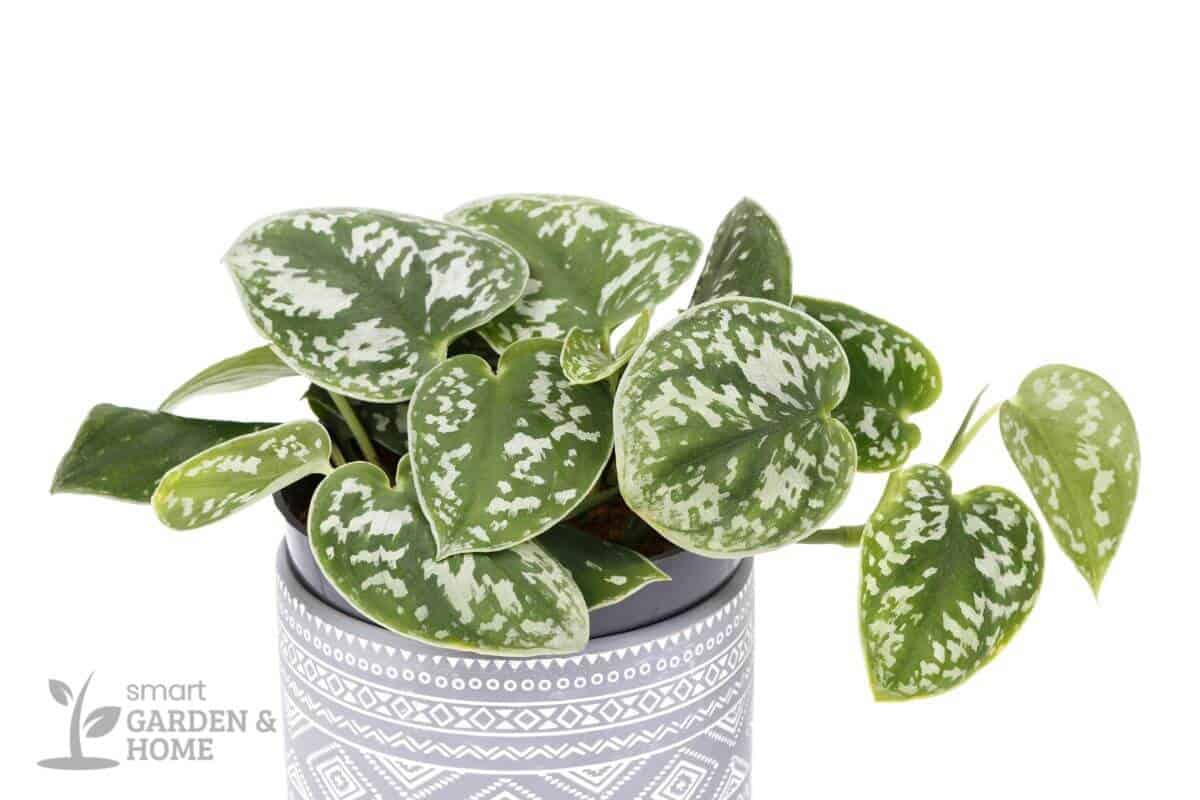
Pothos plants seem to be making a habit of appearing on our lists – here is the Satin Pothos, aka Silver Satin Pothos.
The Satin Pothos plant is known for their green and white speckled leaves. As is the case with most variants of the Pothos plant, they are easy to care for and make exceptional houseplants.
These plants are native to the forests of Asia and prefer higher levels of humidity. Frequently spraying the leaves and stems of this plant will ensure that they remain healthy and assists with their growth.
All Pothos plants thrive with bright ambient lighting conditions, and it’s no secret that these plants can also adapt to lower levels of light.
This tropical plant is sensitive to cooler temperatures and needs to be kept away from any cold breezes or frost-prone areas.
8. Prayer Plant (Calathea Orbifolia)
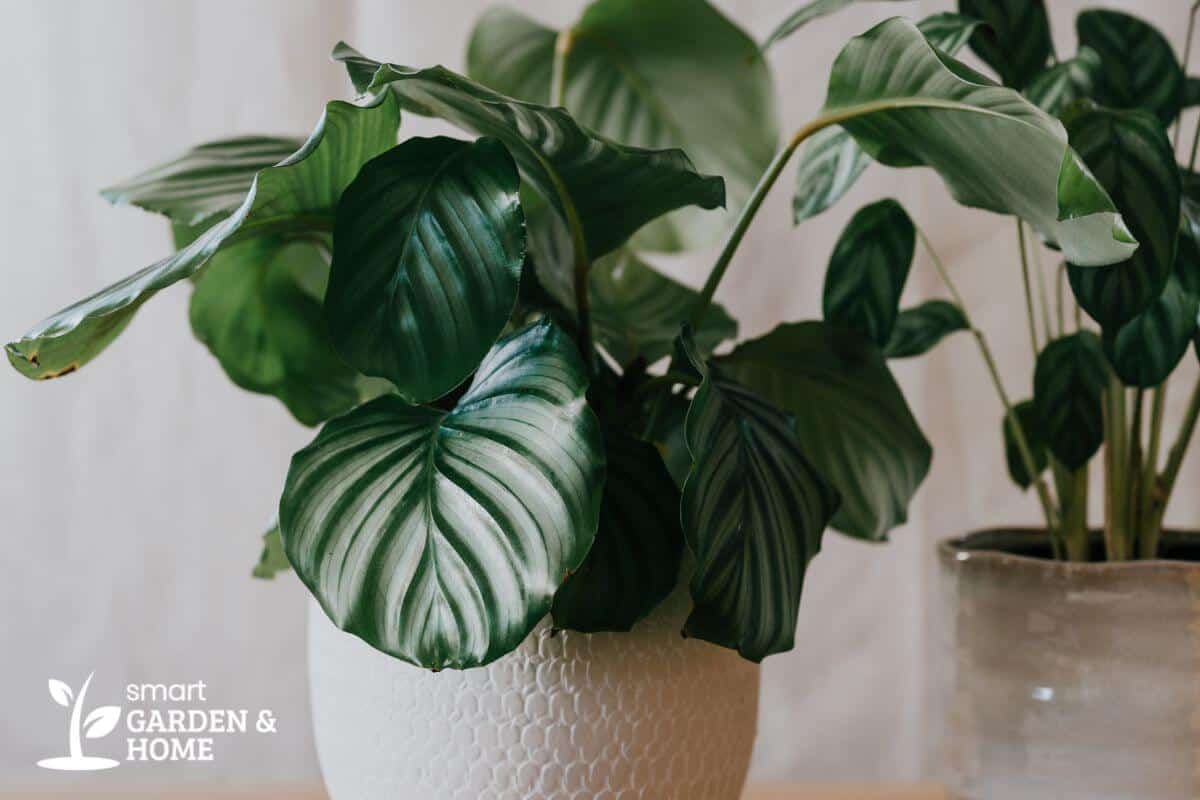
The Prayer Plant is native to the forests of South America.
This amazing plant has large, green foliage marked with white silvery bands, and its impressive leaves make a statement in any interior decor.
Although it’s not the easiest of plants to keep radiant.
This plant requires high levels of humidity, bright ambient light, and warmer indoor temperatures throughout the year.
It’s also safe to plant in your home and non-toxic to animals or humans if digested.
Read more about the beautiful Prayer Plant.
9. Chinese Evergreen (Aglaonema Commutatum)
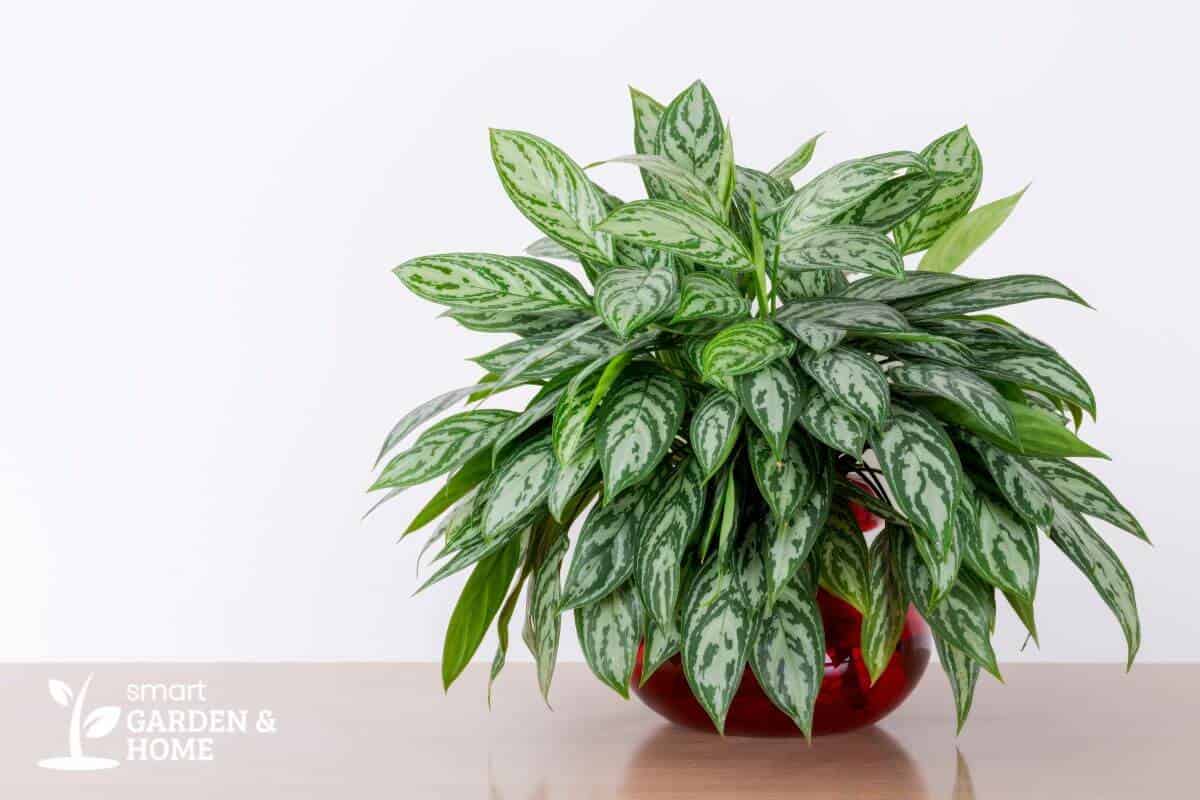
Do you need a plant that is resilient and can withstand a lot of neglect while still looking beautiful?
The Chinese Evergreen is a hardy plant that will tolerate the hardest conditions and remain evergreen.
The Chinese Evergreen leaves are dark green with white spots, or silver markings, depending on which variant is grown.
As indoor plants, they thrive with bright ambient light, but the colors of this plant’s leaves will continue to shine, even in slightly darker environments.
In order to avoid their lush foliage from turning brown, these plants need to be grown in warmer areas of your home, far away from cold breezes.
10. Watermelon Peperomia (Peperomia Argyreia)
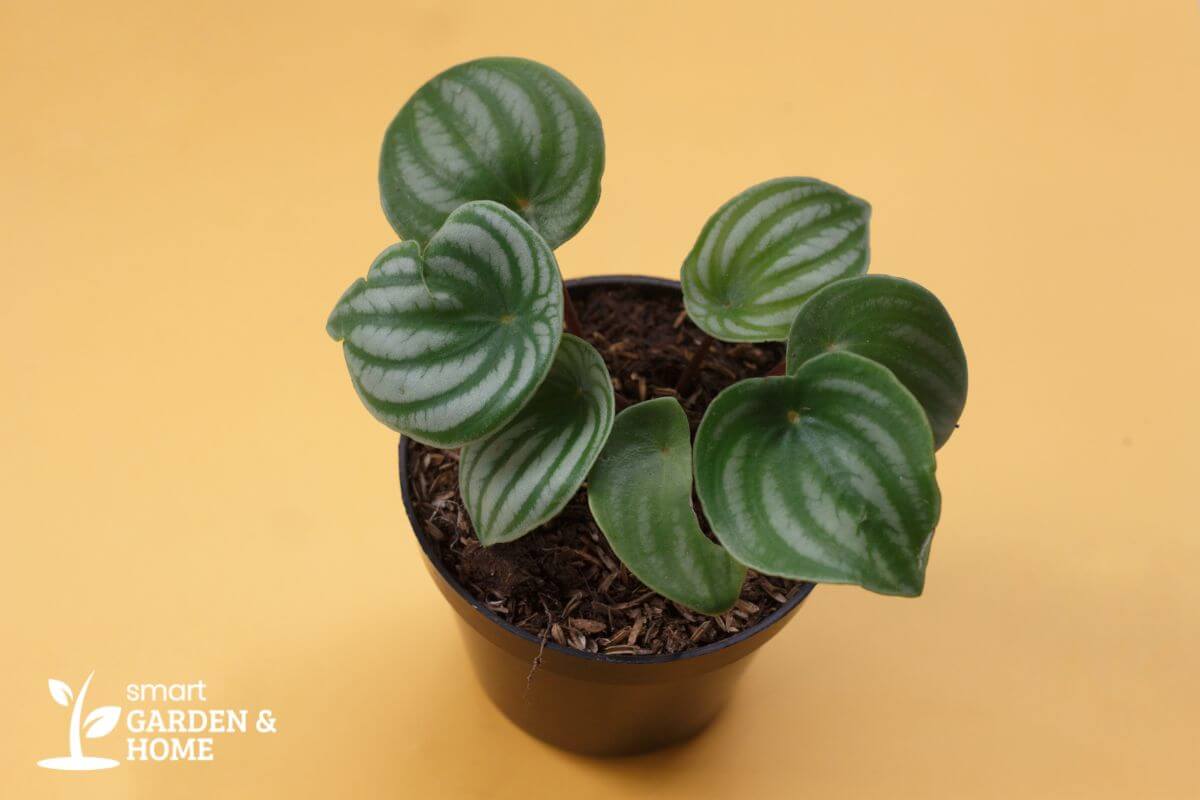
The Watermelon Peperomia is native to South America. As the name suggests, its leaves are colored like watermelon rinds, with white stripes running across its green foliage.
You definitely wouldn’t think twice about adding this decorative plant to your interior designs.
This attractive plant will keep you on your toes as it is a moist-loving plant and needs to be regularly watered.
Find a location indoors that can provide an adequate amount of indirect sunlight. The plant doesn’t need to have access to indirect sunlight throughout the day.
However, lower lighting conditions will result in this plant becoming leggy.
Ensure that the delicate leaves of this plant are kept away from direct sunlight or extensive periods of exposure to afternoon sunlight.
The harsh afternoon sunlight will turn its leaves brown from burning.
11. Zebra Cactus (Haworthiopsis Attenuata)
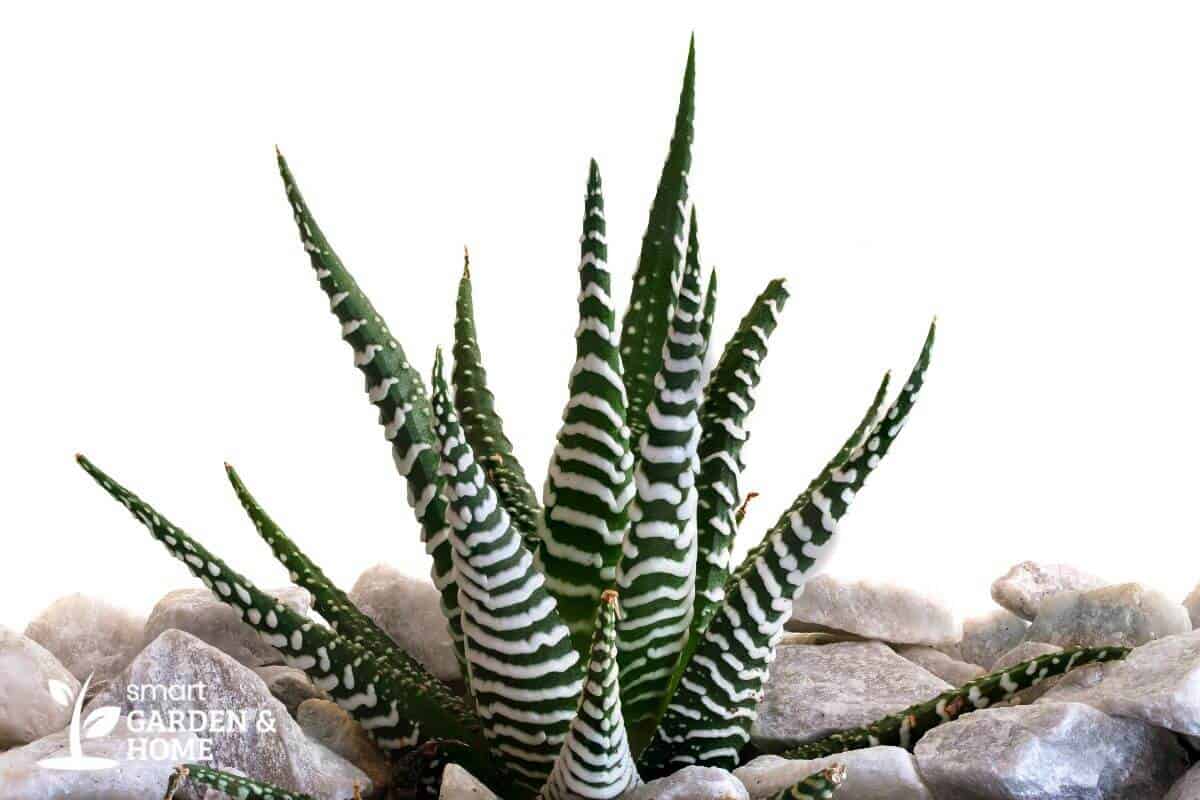
The plant’s name derives from the white stripes on its long, dark green leaves, which resemble the white markings on Zebra skin.
This plant is indigenous to the arid regions of South Africa, and it requires minimal maintenance while also preferring solitude.
The Zebra Cactus is categorized as a small and slow-growing succulent. The plant grows well in conditions of indirect sunlight but has moderate tolerance for direct sunlight in the morning.
The plant’s adaptation to dry environments means it does not require frequent watering. An occasional drop of water every three weeks will be sufficient.
These plants are suitable for both office and home environments and pose no harm to humans or animals as they are non-toxic.
12. Zebra Plant (Aphelandra Squarrosa)
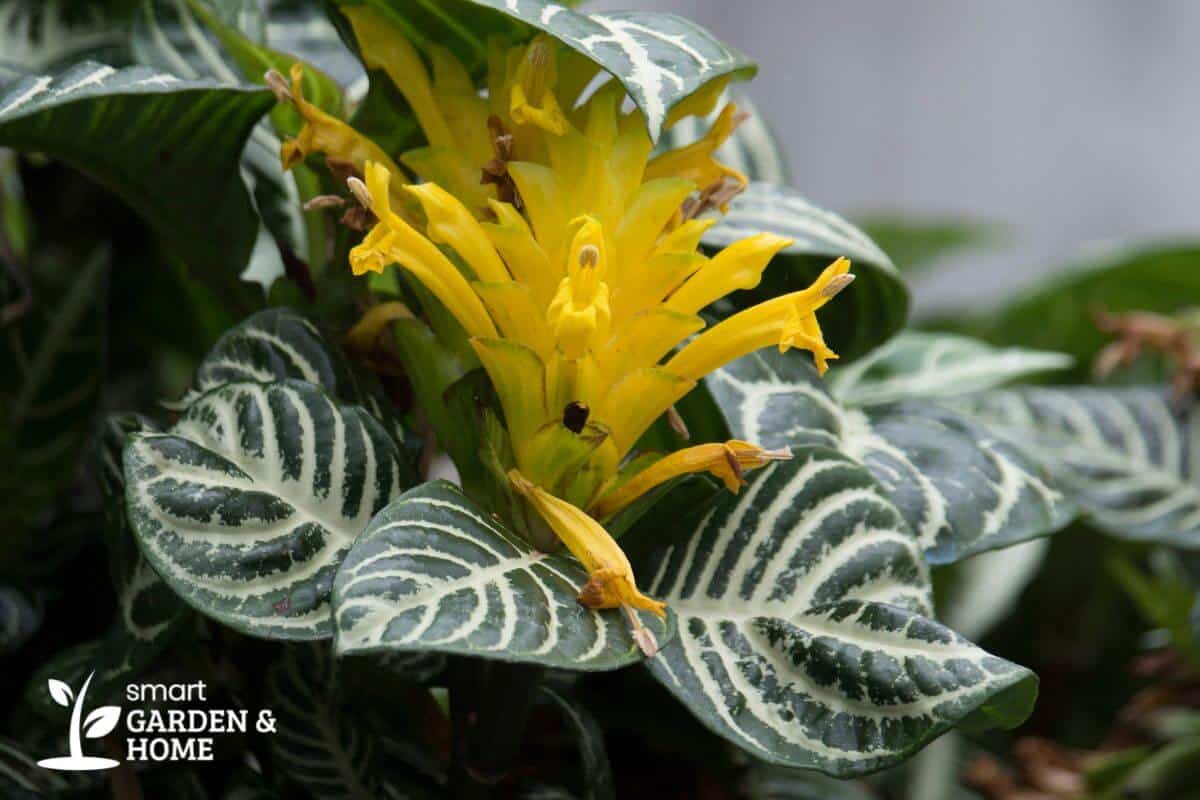
Keeping with the Zebra theme, we thought we’d add this astonishing Zebra Plant that’s native to Brazil.
The Zebra Plant is commonly known and adored for its dark green leaves and white veins. It isn’t in a hurry and grows extremely slowly.
This tropical plant needs high levels of humidity, bright indirect sunlight, and warm indoor temperatures throughout the year.
Due to the frequent rainfall in forest areas, this plant thrives in moist soil and requires consistent watering.
It is safe for both animals and children to be around without any risk of ingesting its leaves. This plant is suitable for indoor cultivation and poses no harm to animals or humans.
13. Splash Select White Polka Dot Plant (Hypoestes Phyllostachya)
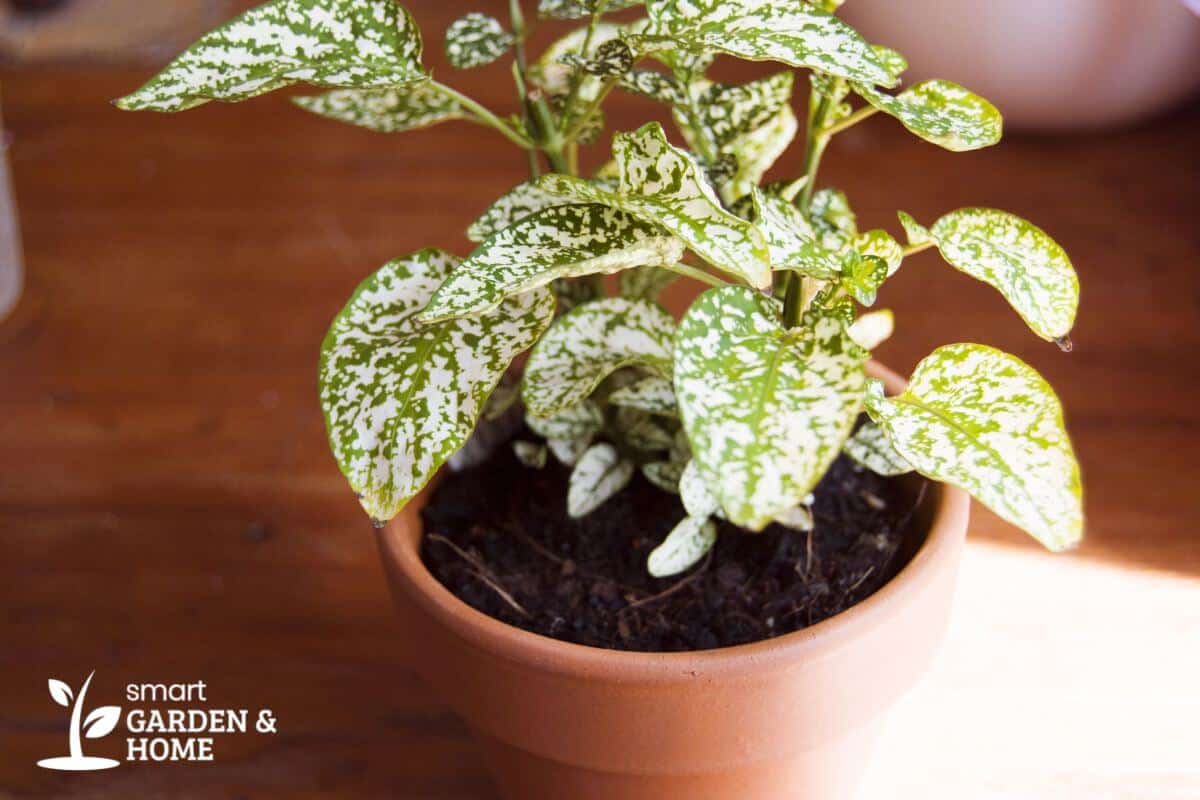
The Splash Select White Polka Dot Plant is sometimes referred to as the Freckle Face plant.
It’s known for the white splashes on its green leaves—it’s almost as if a painter dropped patches of white paint on their green leaves.
Like most indoor plants, this plant requires a certain amount of indirect light throughout the day.
This plant produces the best colors in lower lighting conditions, and it’s usually the opposite way around.
This plant is indigenous to the tropic of Madagascar and requires frequent misting due to its preference for humid climates.
To ensure proper growth, this plant must be watered consistently throughout its growth period from spring through fall.
Always check the surface layer of the soil before watering your plants. Should the first two inches of soil be dried up, it’s time to rehydrate your plants.
14. Creeping Fig (Ficus Pumila ‘Variegata’)
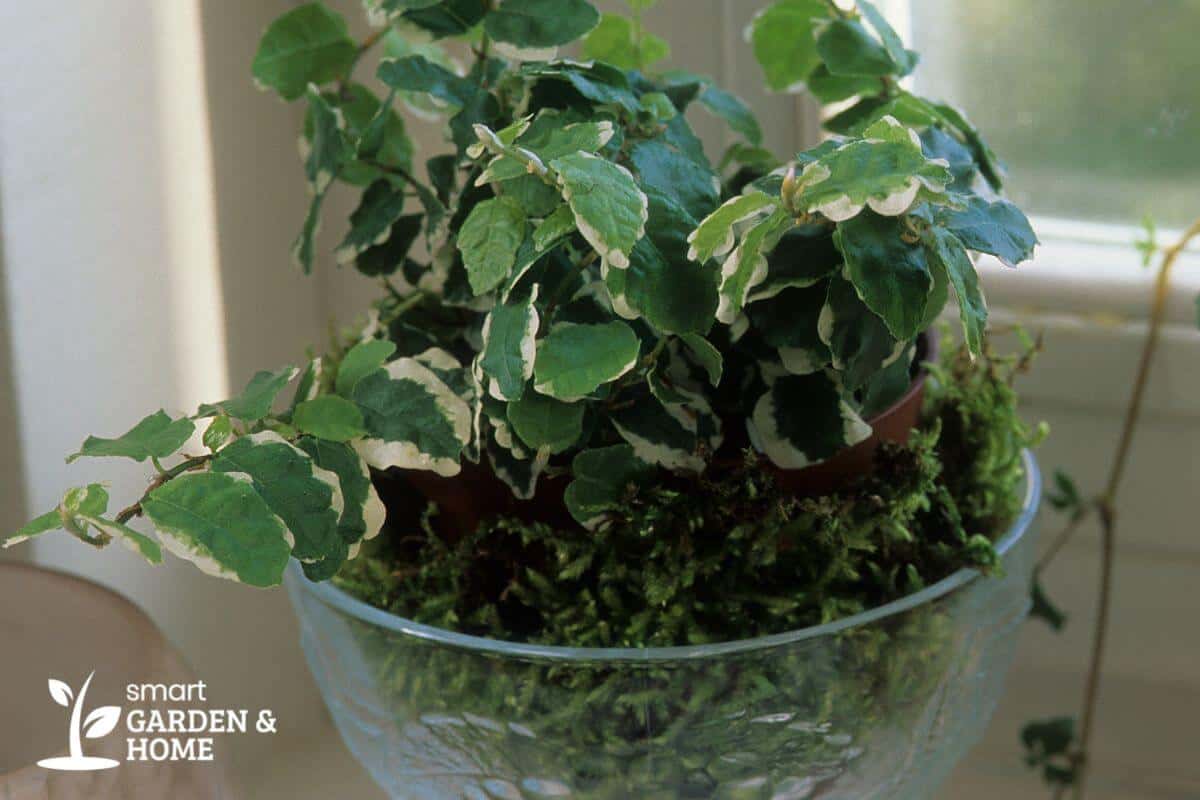
The Creeping Fig plant is one of my favorite indoor houseplants.
The dark green leaves of this plant are bordered with variegated white colors and are relatively small.
As an indoor plant, this plant’s vining abilities make it an ideal plant for a hanging feature.
Find a well-lit room in your house as these plants need moderate to bright indirect light.
Try to avoid completely drying out the plant’s soil, plus keep it moist and frequently watered. This plant has a tendency to lose its stunning leaves when the soil begins to dry out.
The Creeping Fig tree is sensitive to cold temperatures. Try to keep the plant in warmer climates and ensure that there are no cold drafts of air.
15. Weeping Fig (Ficus Triangularis ‘Variegata’)
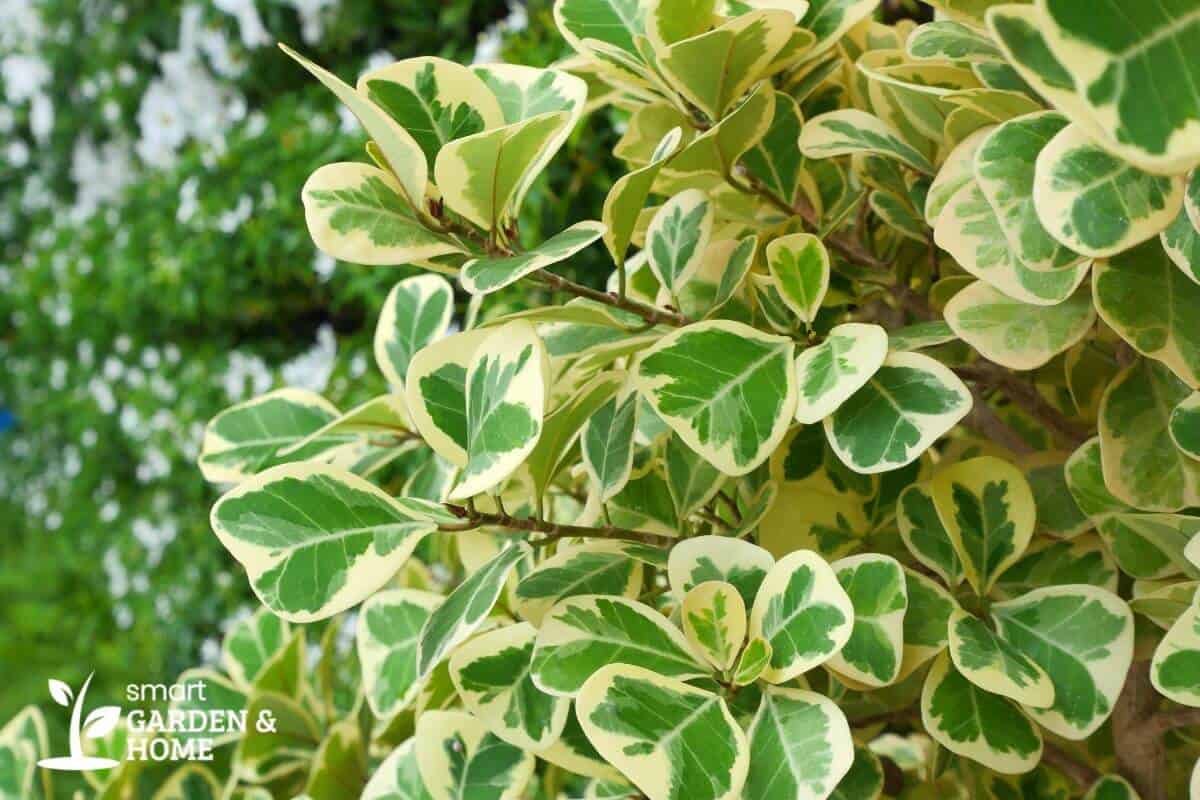
The glossy, dark green leaves of the Weeping Fig plant are variegated with creamy white veins throughout its foliage.
The mature height of this plant can reach 6 feet, while its younger state has a compact height that makes it suitable for indoor houseplant arrangements.
To maintain healthy and vibrant leaves, it is necessary to provide this plant with indirect yet bright light.
It also prefers growing in humid climates, so regularly spraying the leaves with a spray bottle, or placing a pebble tray around the plant, will greatly assist the plant’s growth.
The Weeping Fig tree prefers to grow in climates that don’t fluctuate. This plant requires insulation and protection from low temperatures.
This plant necessitates increased water supply during its growing seasons, spanning from spring to fall. Conversely, during the colder winter months, the plant will undergo dormancy and require lesser water.
16. Reed Canary Grass (Phalaris Arundinacea)
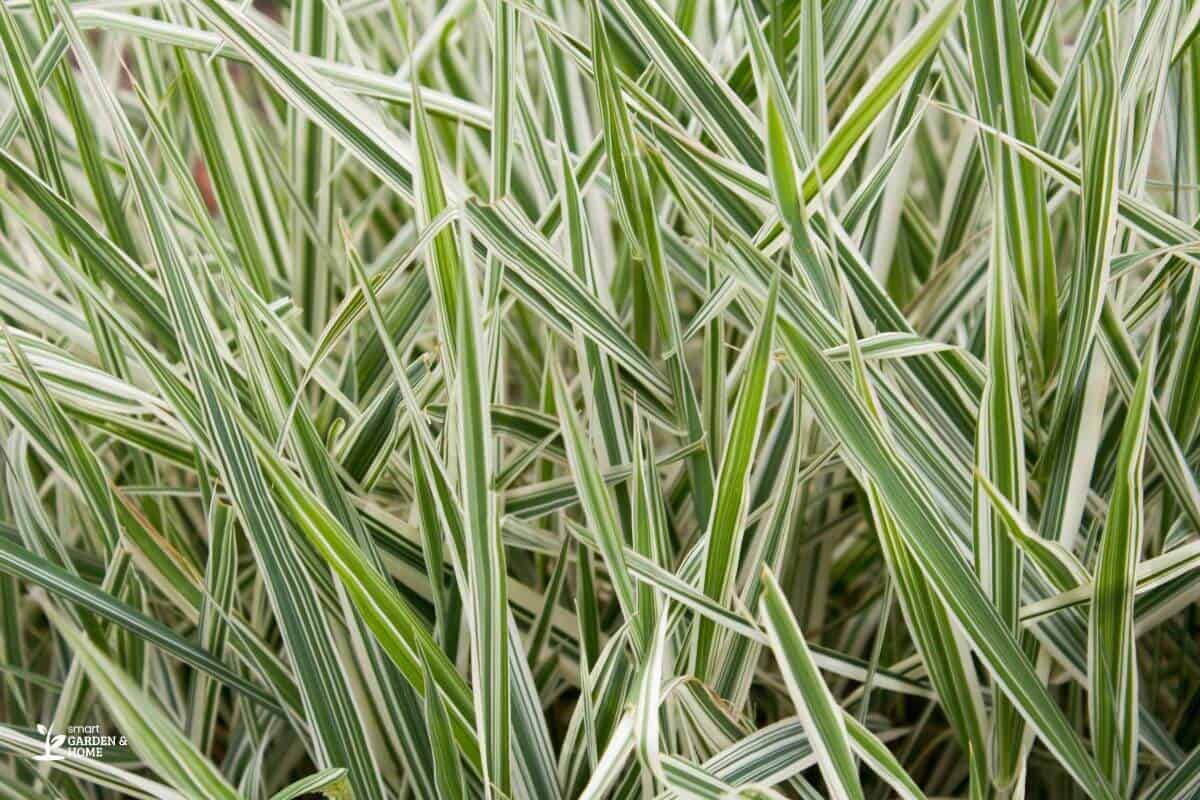
Reed Canary Grass is a cool-season grass that is native to Europe and Asia. It is often grown for forage, hay, and erosion control.
This grass has a coarse texture, with green leaves having white margins that grow a mature height of up to six feet in height. It produces clusters of tiny, green flowers in spring and summer.
When it comes to care, Reed Canary Grass prefers bright sunlight to partial shade and well-draining soil.
This plant can grow in various soil types such as clay, loam, and sand, but does not thrive in consistently waterlogged soil.
17. Swiss Cheese Plant (Monstera Albo/Monstera Deliciosa)
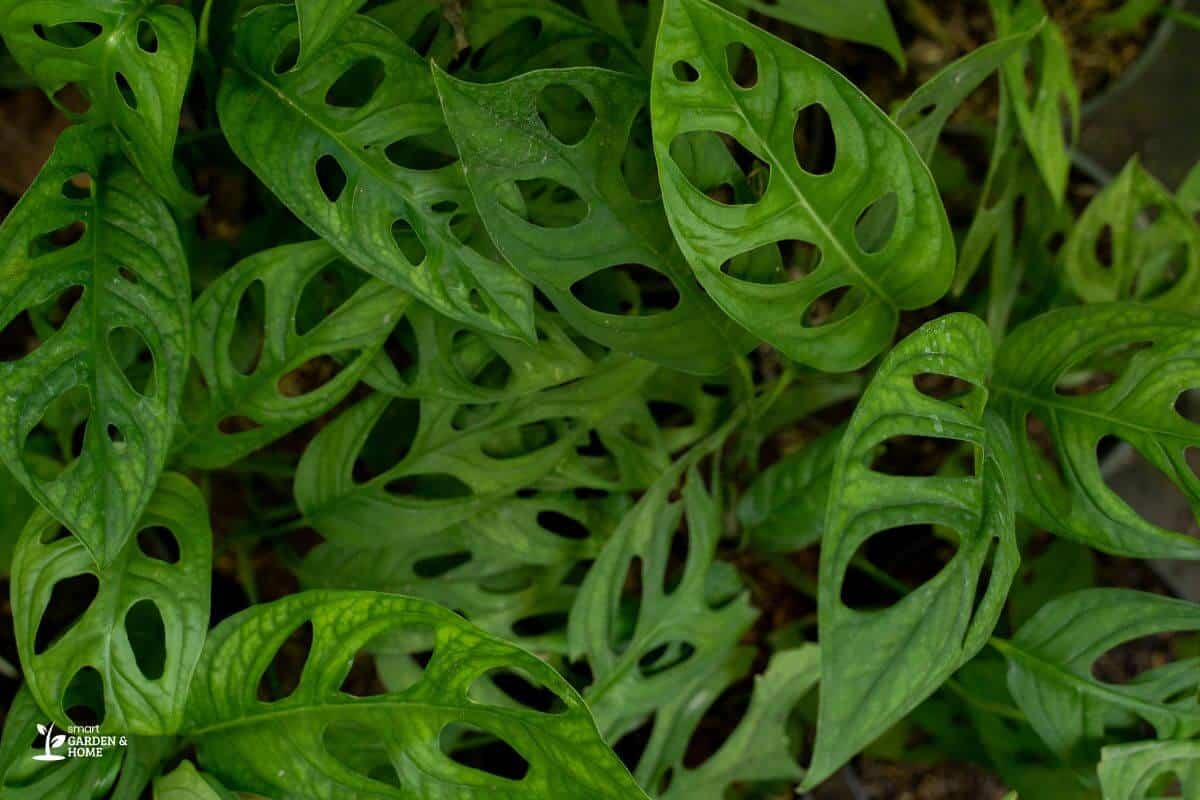
The Swiss Cheese Plant is a popular houseplant recognized for its sizable, shiny, gray-green leaves that form distinctive holes or perforations as it grows older.
The evergreen vine originates from rainforests in Central and South America and has the potential to reach heights of up to 70 feet.
As a houseplant, it typically grows up to 10 feet in height.
To maintain a healthy Swiss Cheese Plant, it is advised to expose it to bright, indirect sunlight and use well-draining organic soil that is kept moist.
It prefers a warm, humid environment and will benefit from regular misting or placement near a humidifier.
Final Thoughts on Plants with Green and White Leaves
Variegated plants featuring green leaves with white streaks are aesthetically pleasing as both houseplants and outdoor garden additions.
This group of beautiful plants provides a variety of choices for those seeking either a bold or subtle addition to your existing collection of green houseplants.
There are many beautiful houseplant options available to suit various tastes and preferences and be the ideal choice—from the Pothos with its green and white variegation and the Calathea with its intricate white spots.
Plants offer both visual appeal and air purification, as well as promote a sense of tranquility.
Incorporating these awesome plants into your home or outdoor space can create a calming atmosphere and add natural beauty to your surroundings.
Check out these articles for more information about plants for your garden:

